The Castlemaine region is home to a wide variety of reptiles, many of which occur in bushland and residential areas. We have representatives of the main Australian reptile groups (see Checklist below). Quite a few of our reptiles are small and several are nocturnal. Many are secretive in their behaviour so are seldom seen.
Snakes
Our commonest snakes are DANGEROUSLY VENEMOUS and should not be approached or handled. Most snake bites occur when people are trying to kill the snake or handle it in some way. If you encounter a snake LEAVE IT ALONE! Watch and admire it from a safe distance but do NOT attempt to catch it or kill it. Wait for it to move away which it will probably do once it realises that you are present.
Remember that all reptiles are protected native wildlife.
Eastern Brown Snake (Pseudonaja textilis)
The most common snake in this district. Can grow to 2 m and shelters in or under logs or other cover.

Eastern Tiger Snake (Notechis scutatus)
A medium snake (to 1.2 m), found mainly in the proximity of water.
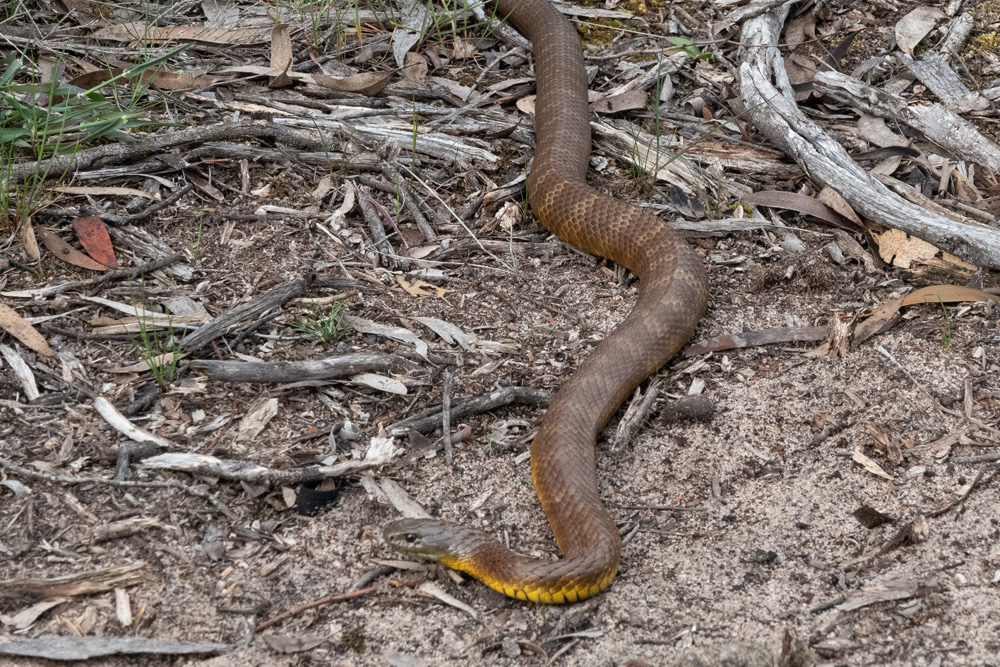
Blackish Blind Snake (Anilios nigrescens)
A moderate sized (to 750mm) snake with small eyes found in woodlands and rainforest, usually beneath rocks and logs. One of two species in this group found in our region.
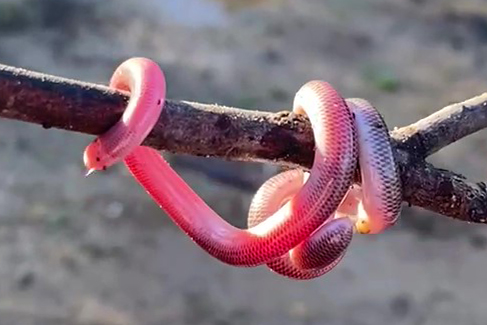
Lizards
The largest lizards in the region are the Goannas or Monitors. Other large lizards include the blue-tongue skinks and Jacky Lizard, a dragon. The smaller lizards include skinks, geckoes and some legless lizards.
Lace Monitor (Varanus varius)
The only goanna that is regularly seen in our area. They can grow up to 2m in length. They will often climb trees if disturbed.

Shingle-back; Stumpy-tailed Lizard (Tiliqua rugosa)
These are quite long-lived lizards in the skink family that mate for life. They are often seen in pairs in late spring and early summer. Widespread and moderately common large (to 41 cm), slow-moving lizard.
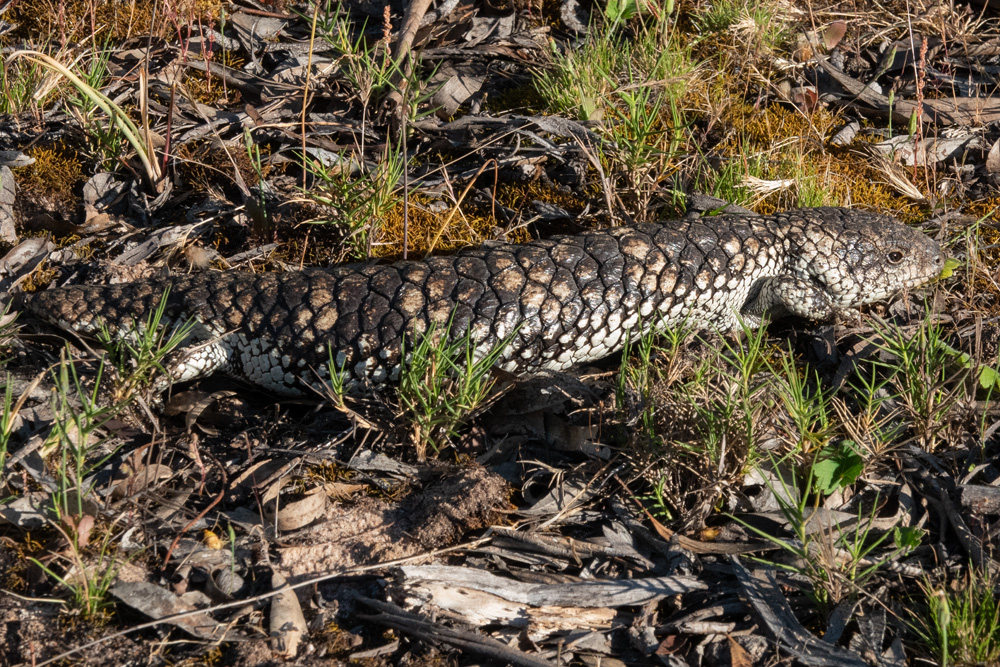
Common Blue-tongued Lizard (Tiliqua scincoides)
Widespread and common large (to 60 cm), slow-moving lizard, found in both bush and residential areas.
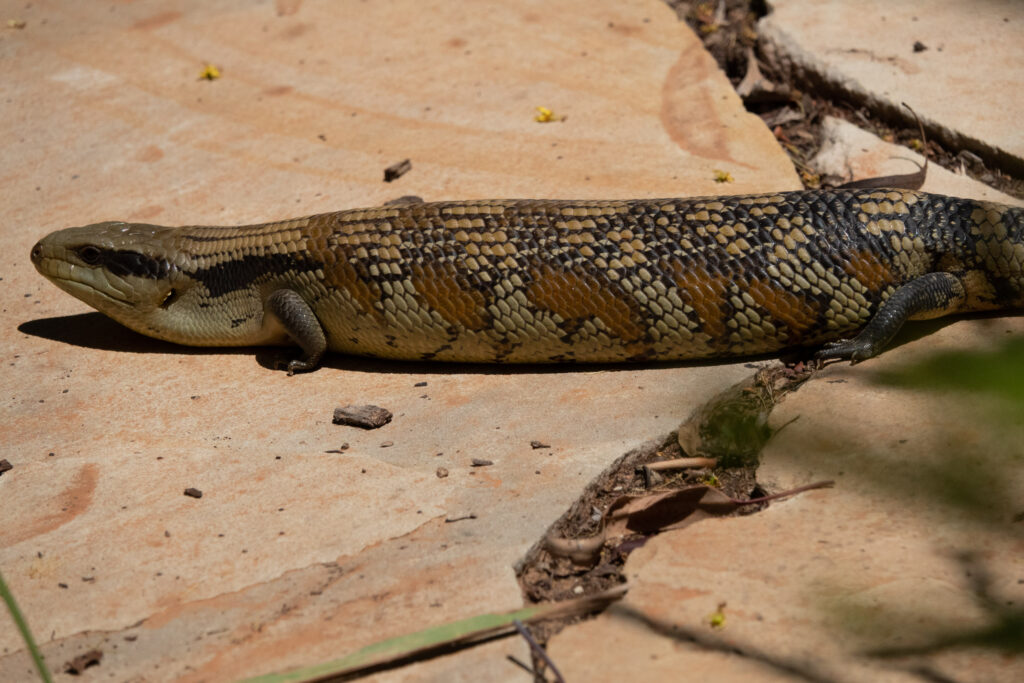
Skinks
In addition to the two species of skink mentioned above our region is home to a number of smaller skinks. These are distinguished by their relatively long bodies and short legs and necks. With the local exception of Cunningham’s Skink, their scales are usually smooth and shiny.
The most common in this region is the Garden Skink (Lampropholis guichenoti), and the least common are Cunningham’s (Egernia cunninghami) and Eastern Three-lined Skinks (Acritoscincus duperreyi). Also found in reasonable numbers are White’s (Liopholis whitii), Bougainville’s (Lerista bougainvillii) and Boulanger’s Skinks (Morethia boulangeri).
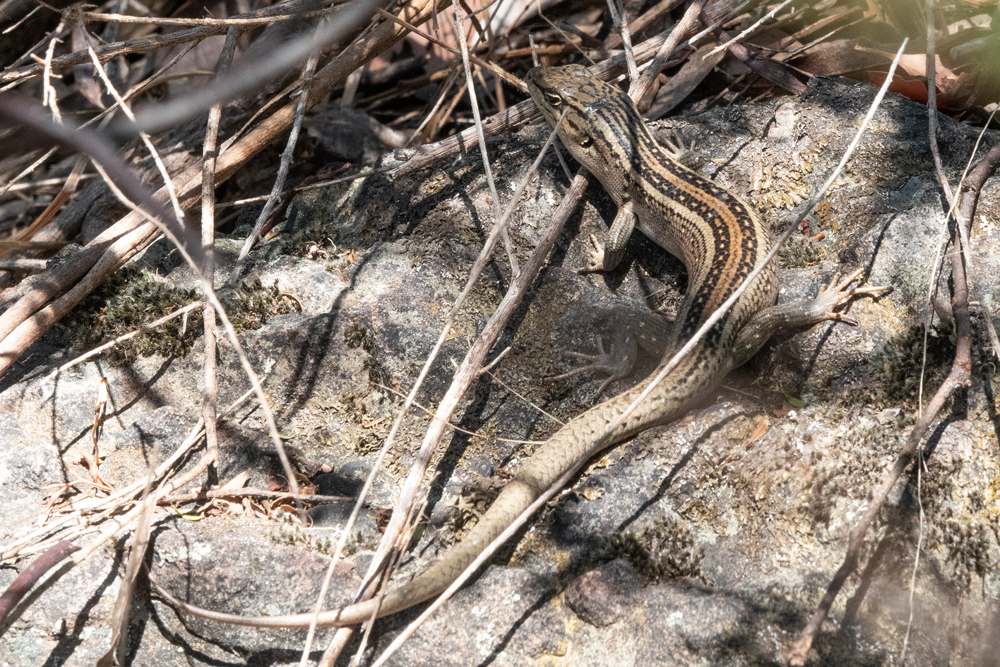
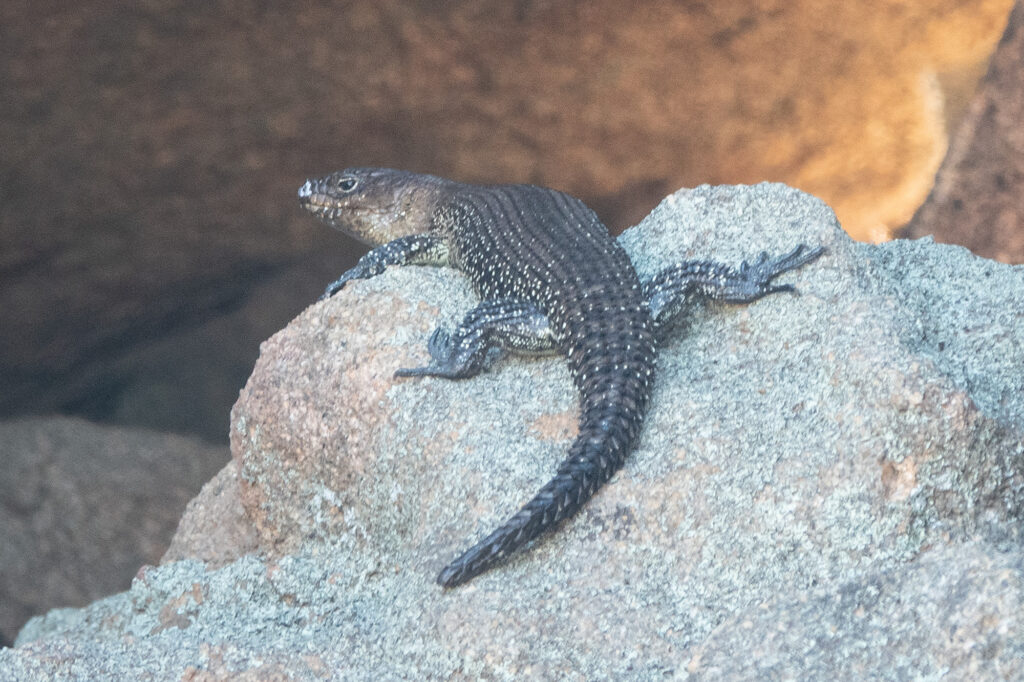
Cunningham’s Skink, Egernia cunninghami. Photo: Euan Moore
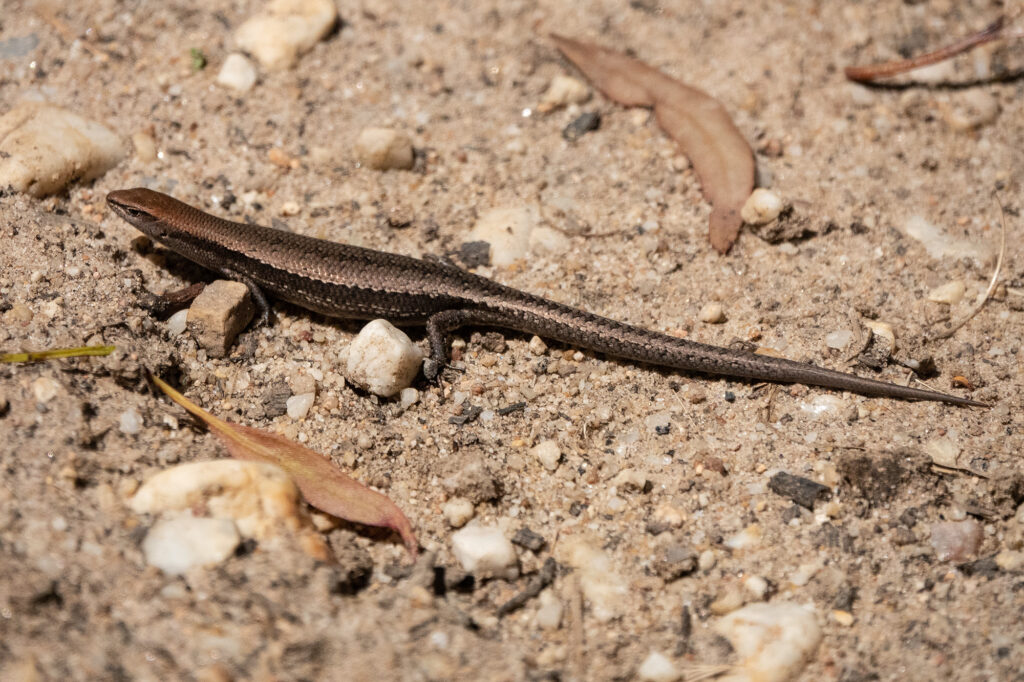
Pale-flecked Garden Sunskink, Lampropholis guichenoti. Photo: Euan Moore
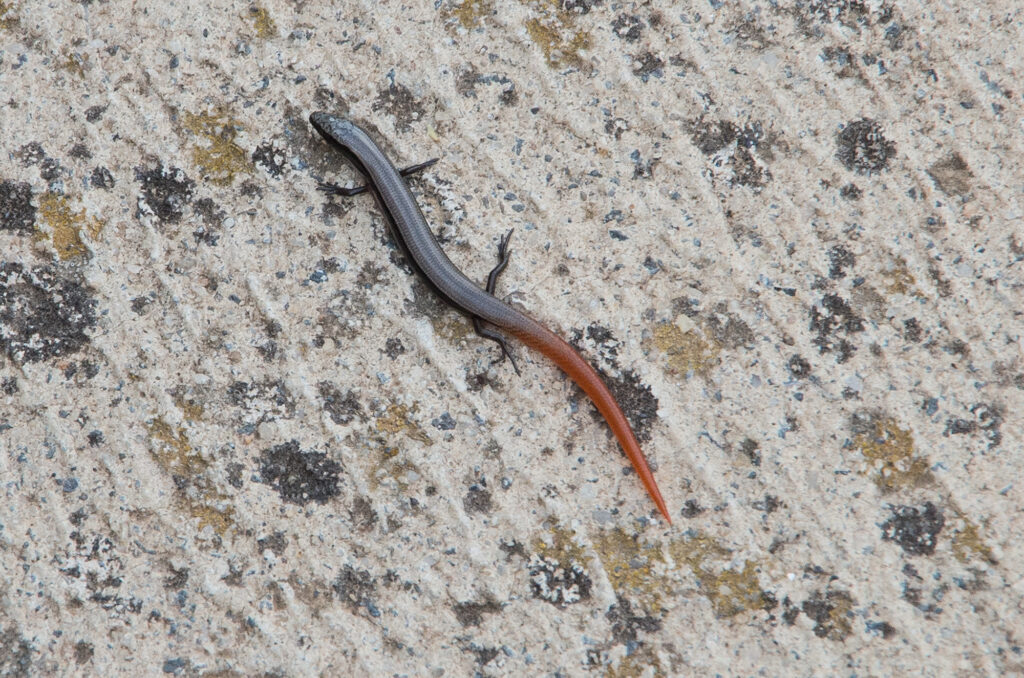
South-eastern Slider, Lerista bougainvillii. Photo: Euan Moore
Jacky Lizard; Tree Dragon (Amphibolurus muricatus)
This is the most common dragon that occurs in our region. Jacky Lizards are moderately large (10-12cm head-body) with a long tail and spiny scales. They are found in open woodland where they will often bask on branches and dead sticks.

Eastern Bearded Dragon (Pogona barbata)
Eastern Bearded Dragons are rare in our region although there have been several reported sightings in recent years and they may be becoming more common. They are a large robust lizard (< 27cm head-body) with a long tail and many spiny scales. They have a characteristic beard of spines around the throat which is often blackish. They are found in open woodland where they will often bask on fence posts, branches and dead sticks, sometimes several meters above the ground.
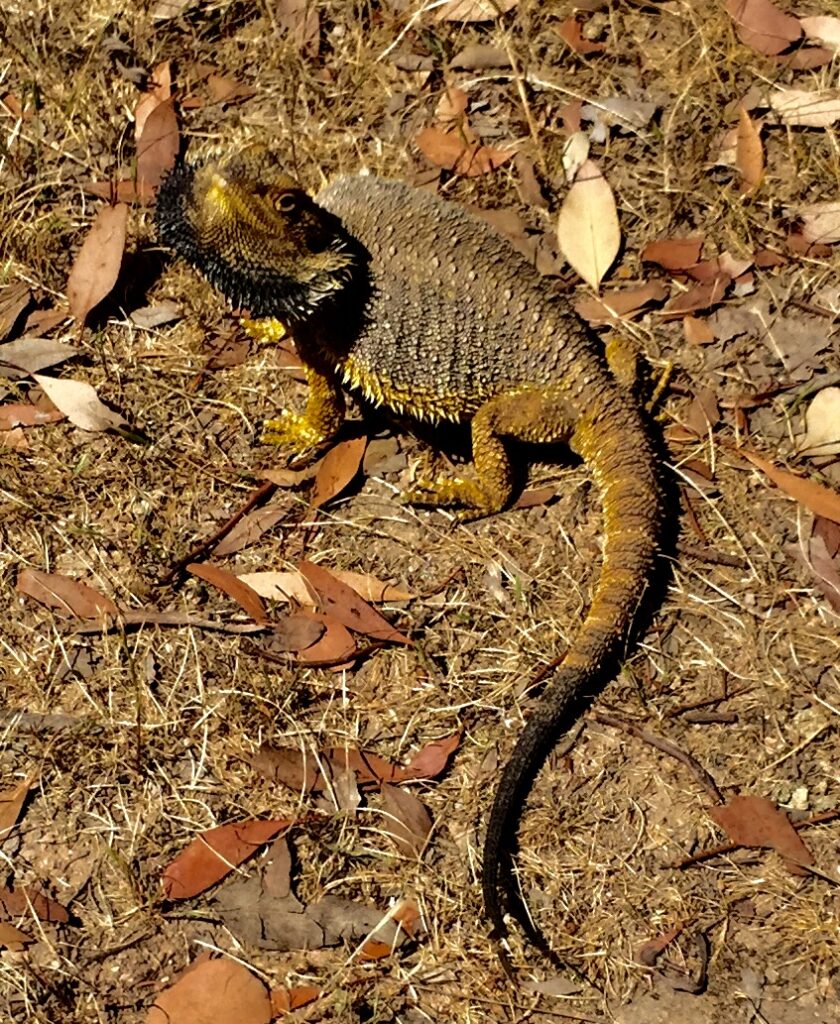
Geckos
Geckos are small nocturnal lizards. Their skin has a soft, velvety appearance. The most common gecko in the district is the Marbled Gecko (Christinus marmoratus). This species is often found in the home, sometimes in small colonies. Two other geckos, generally uncommon, are the Thick-tailed or Barking Gecko (Underwoodisaurus milii) and the Eastern Stone or Wood Gecko (Diplodactylus vittatus).

Turtle
Turtles are common in rivers, wetlands and farm dams across the region. There are two species of turtle recorded in our region.
The Common Long-necked Turtle,Chelodina longicollis, is the most frequently seen, often travelling across country between rivers and farm dams. The length of head and neck is up 60% of the carapace length.
Less common is the larger Murray Turtle, Emydura macquarii, which occurs downstream in the Loddon and Campaspe Rivers and further away, in the Murray River. There are a few records from Lake Joanna, Castlemaine Botanic Gardens, and the lakes at Daylesford which may be individuals that have been illegally released from captivity.

Common Long-necked Turtle or Eastern Snake-necked Turtle (Chelodina longicollis)
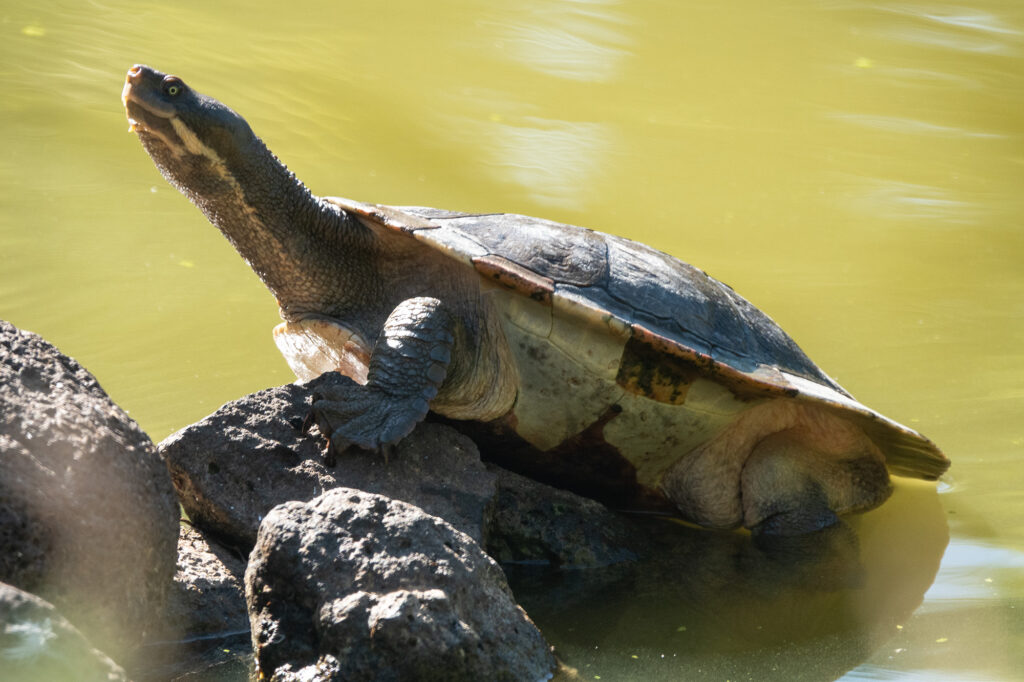
Murray Turtle, Emydura macquarii, at Castlemaine Botanic Gardens
Checklist
This Checklist of Reptiles of the Mount Alexander region is based on observations for the region recorded in the Atlas of Living Australia.
| Common Name | Species Name | Notes |
|---|---|---|
| TURTLES | ||
| Eastern Snake-necked Turtle | Chelodina longicollis | |
| Murray Turtle | Emydura macquarii | FFG - Critically Endangered |
| GECKOS | ||
| Marbled Gecko | Christinus marmoratus | |
| Thick-tailed Gecko | Underwoodisaurus milii | |
| Wood Gecko | Diplodactylus vittatus | |
| DRAGONS | ||
| Jacky Lizard | Amphibolurus muricatus | |
| Eastern Bearded Dragon | Pogona barbata | FFG - Vulnerable |
| FLAP-FOOTED LIZARDS | ||
| Many-lined Delma | Delma impar | FFG - Endangered |
| Patternless Delma | Delma inornata | |
| SKINKS | ||
| Highlands Forest-skink | Anepischetosia maccoyi | |
| Southern Forest Cool-skink | Carinascincus coventryi | |
| Eastern Ctenotus | Ctenotus orientalis | |
| Robust Ctenotus | Ctenotus robustus | |
| Black Rock Skink | Egernia saxatilis | |
| Cunningham's Skink | Egernia cunninghami | |
| Southern Water-skink | Eulamprus tympanum | |
| Pale-flecked Garden Sunskink | Lampropholis guichenoti | |
| Dark-flecked Garden Sunskink | Lampropholis delicata | |
| South-eastern Slider | Lerista bougainvillii | |
| White's Skink | Liopholis whitii | |
| South-eastern Morethia Skink | Morethia boulengeri | |
| Tussock Cool-skink | Pseudemoia entrecasteauxii | |
| Tussock Skink | Pseudemoia pagenstecheri | FFG - Endangered |
| Weasel Skink | Saproscincus mustelinus | |
| Shingle-back | Tiliqua rugosa | |
| Blotched Blue-tongue | Tiliqua nigrolutea | |
| Eastern Blue-tongue | Tiliqua scincoides | |
| GOANNAS | ||
| Lace Monitor | Varanus varius | FFG - Endangered |
| BLIND SNAKES | ||
| Blackish Blind Snake | Anilios nigrescens | |
| Proximus Blind Snake | Anilios proximus | |
| VENEMOUS LAND SNAKES | ||
| Lowland Copperhead | Austrelaps superbus | |
| Eastern Small-eyed Snake | Cryptophis nigrescens | |
| White-lipped Snake | Drysdalia coronoides | |
| Tiger Snake | Notechis scutatus | |
| Little Whip Snake | Parasuta flagellum | |
| Red-bellied Black Snake | Pseudechis porphyriacus | |
| Eastern Brown Snake | Pseudonaja textilis |
Further reading:
Baker, K., Birkenbeil, A., Nicholas, H., Native Plants and Animals of the Chewton Bushlands, Chewton, Chewton Bushlands Asssociation, 2017.
Tzaros, Chris, Wildlife of the Box-Ironbark Country, Melbourne CSIRO Publishing, 2021.
Wilson, S., Swan, G., A Complete Guide to the Reptiles of Australia, Sixth Edition, New Holland Publishers (Australia) Pty Ltd. 2021